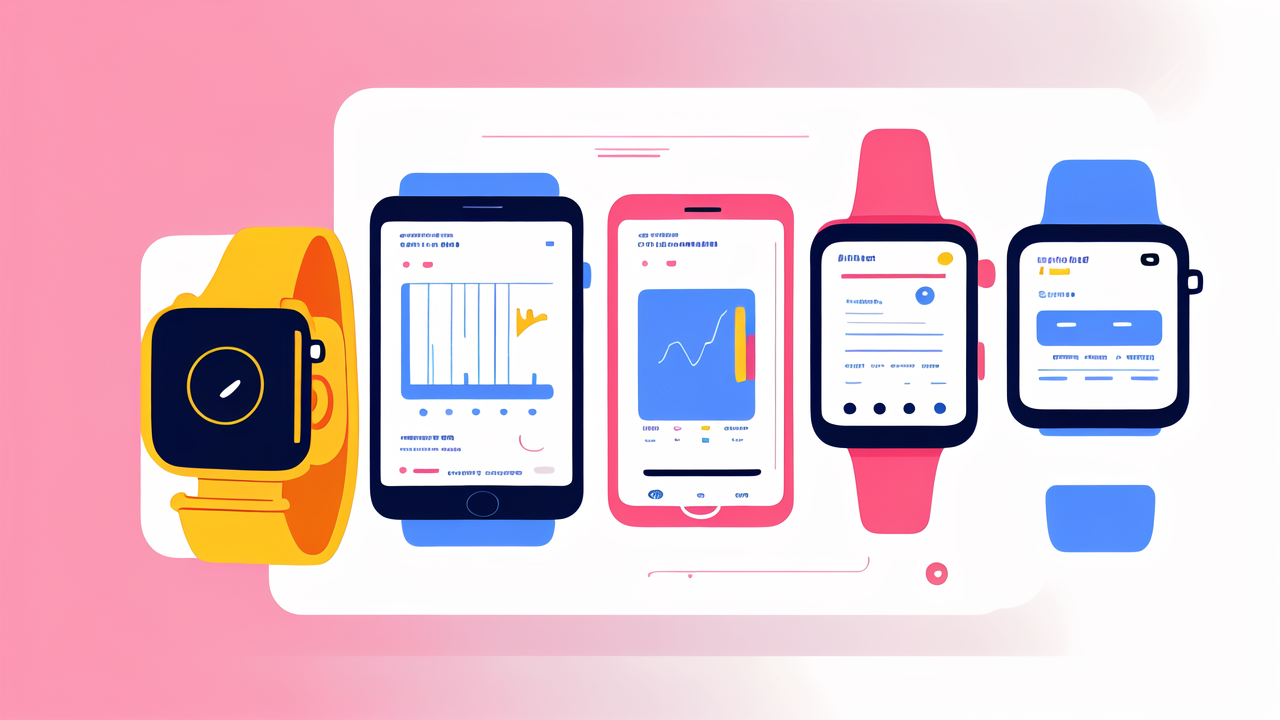Understanding the Smart Watch Market in the United States
The Evolution of Smart Watch Technology
Smart watches have come a long way since their inception. They began as simple devices that told time and date. Now, they're powerful wearable computers. The first smart watches were bulky and had limited features. They could only show notifications from your phone.

Today's smart watches are sleek and packed with features. They can track fitness, monitor heart rate, and even make calls. Some models can work without a phone nearby. The screens have gotten bigger and brighter. Battery life has improved too.
Smart watch operating systems have also evolved. Apple's watchOS and Google's Wear OS lead the market. These systems offer app stores and voice assistants. They integrate well with smartphones, making them more useful.
Key Players and Market Leaders in the Smart Watch Industry
The smart watch market is dominated by a few key players. Apple is the clear leader with its Apple Watch series. They offer a seamless experience for iPhone users. Samsung is another major player with its Galaxy Watch line. These watches work well with Android phones.
Fitbit, now owned by Google, focuses on fitness tracking. Garmin is popular among athletes and outdoor enthusiasts. Fossil makes fashion-forward smart watches. They partner with various designer brands.
Each company has its strengths. Apple excels in user experience and health features. Samsung offers long battery life and a rotating bezel. Fitbit is known for its sleep tracking. Garmin stands out for its GPS and sports features.
User Adoption and Consumer Behavior Analysis
Smart watch adoption has grown steadily in recent years. More people are seeing the value in these devices. Health and fitness tracking are major drivers of adoption. Many users like getting notifications on their wrist.
Consumer behavior shows interesting trends. Most people wear their smart watches daily. They use them for basic tasks like checking time and notifications. Fitness tracking is also a popular use case.
However, some features are underused. Mobile payments and third-party apps see less use. Battery life remains a concern for many users. Price is also a factor in adoption. Many consumers wait for sales or buy older models.
Innovations in Smart Clothing: Blending Fashion and Technology
The Emergence of Smart Fabrics and Wearables
Smart clothing is an exciting new frontier in wearable tech. It combines traditional textiles with advanced electronics. Smart fabrics can sense and react to environmental conditions. They can also collect and transmit data.

Some smart fabrics can change color or pattern. Others can regulate body temperature. There are even fabrics that can generate and store electricity. These innovations open up new possibilities for clothing design.
Wearable sensors are being integrated into clothing. These can track vital signs, posture, and movement. Athletes use smart clothing to monitor performance. Healthcare applications are also being explored.
How Smart Clothing is Changing the Fashion Industry
Smart clothing is pushing the boundaries of fashion design. Designers are experimenting with new materials and technologies. They're creating clothes that are both stylish and functional.
LED-embedded dresses have appeared on runways. Jackets with built-in heating elements are now available. Some brands offer shirts that can track heart rate and breathing.
The fashion industry is also exploring sustainable smart clothing. Solar-powered fabrics could charge devices. Self-cleaning textiles could reduce water use. These innovations could make fashion more eco-friendly.
The Role of IoT in Smart Clothing Development
The Internet of Things (IoT) plays a crucial role in smart clothing. It allows clothes to connect and share data. This enables new features and functionalities.
IoT sensors in clothing can collect data on the wearer's environment. This data can be used to adjust clothing properties. For example, a jacket could automatically heat up in cold weather.
IoT also allows smart clothes to interact with other devices. A shirt could sync with your smart watch. It could share health data or control your smart home devices.
Future Prospects: What's Next for Smart Watches and Smart Clothing?
Emerging Trends in Wearable Technology
The future of wearable tech looks exciting. We're likely to see more integration between devices. Smart watches might work seamlessly with smart clothing. This could provide a more complete picture of our health and activity.

Flexible displays are an emerging trend. These could wrap around the wrist or be integrated into clothing. They could offer larger screens without bulky devices.
Energy harvesting is another area of innovation. Devices might power themselves from body heat or movement. This could solve battery life issues in wearables.
The Impact of AI and Machine Learning on Wearable Devices
AI and machine learning are set to transform wearables. They could make devices smarter and more personalized. AI could analyze data from wearables to provide health insights. It could detect patterns and predict potential issues.
Machine learning could improve fitness tracking. It could learn your habits and provide better recommendations. AI assistants on smart watches could become more capable. They might handle complex tasks and conversations.
In smart clothing, AI could enable adaptive features. Clothes could adjust to your body temperature or activity level. They might even predict when you'll feel hot or cold.
Integrating Blockchain Technology for Enhanced Security
As wearables collect more personal data, security becomes crucial. Blockchain technology could provide a solution. It offers a secure and decentralized way to store and share data.
Blockchain could give users more control over their data. They could choose what to share and with whom. This could increase trust in wearable devices.
Smart contracts on blockchain could enable new features. For example, insurance policies could automatically adjust based on health data. Fitness achievements could be securely recorded and rewarded.
In conclusion, the future of wearable tech is bright. Smart watches and smart clothing are evolving rapidly. They're becoming more powerful, useful, and integrated into our lives. As technology advances, we can expect even more exciting innovations in this field.




Leave a comment
This site is protected by hCaptcha and the hCaptcha Privacy Policy and Terms of Service apply.